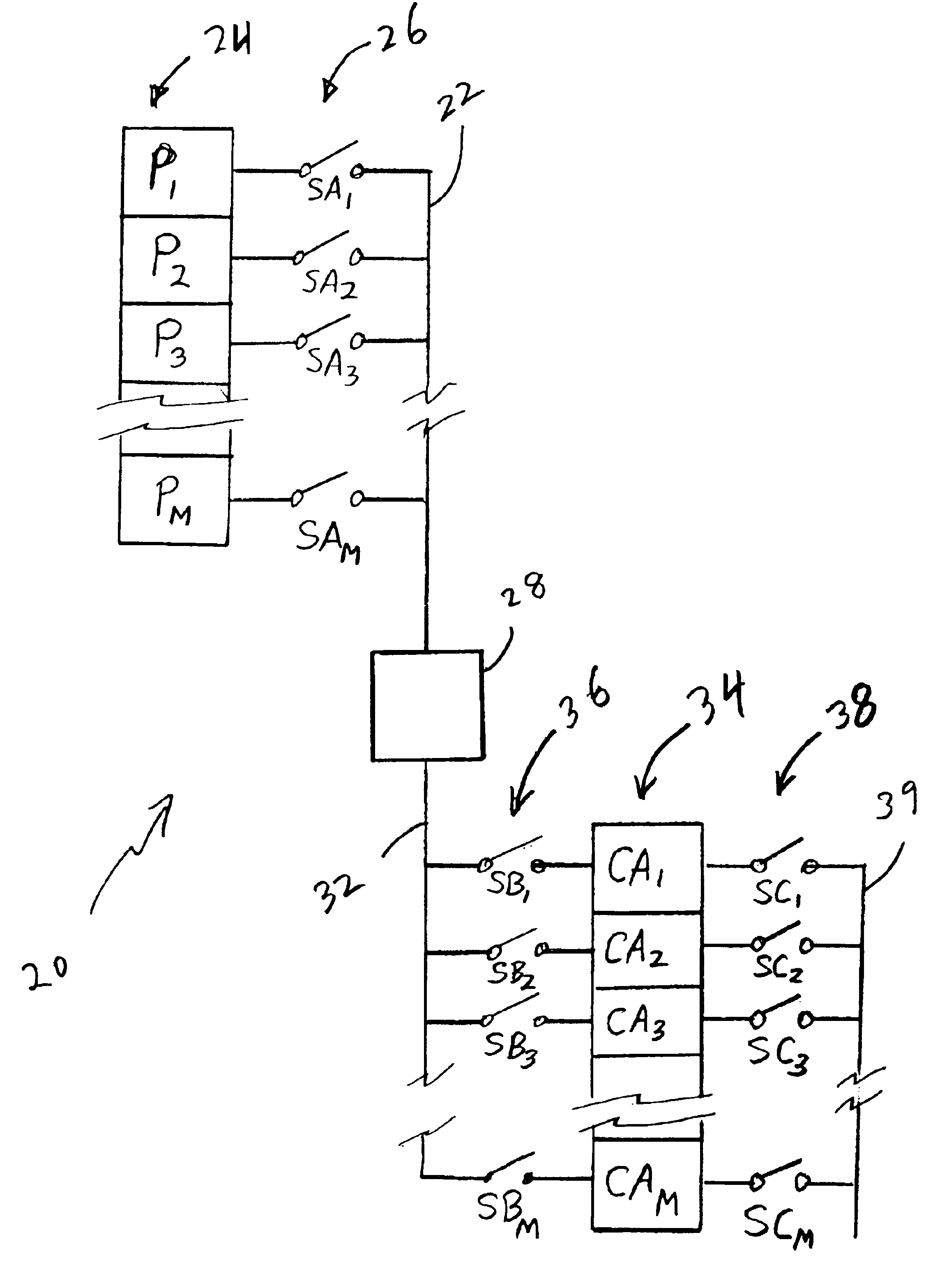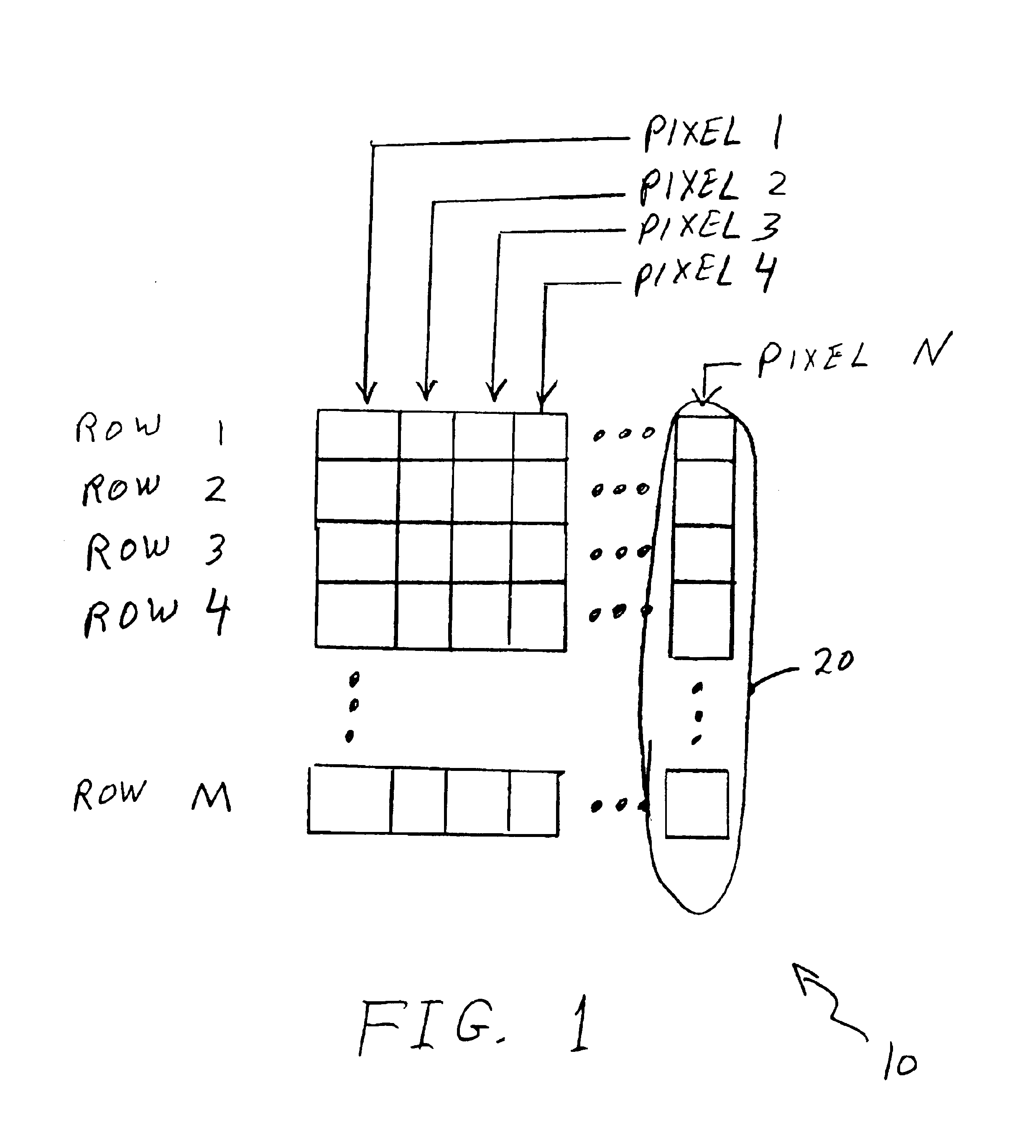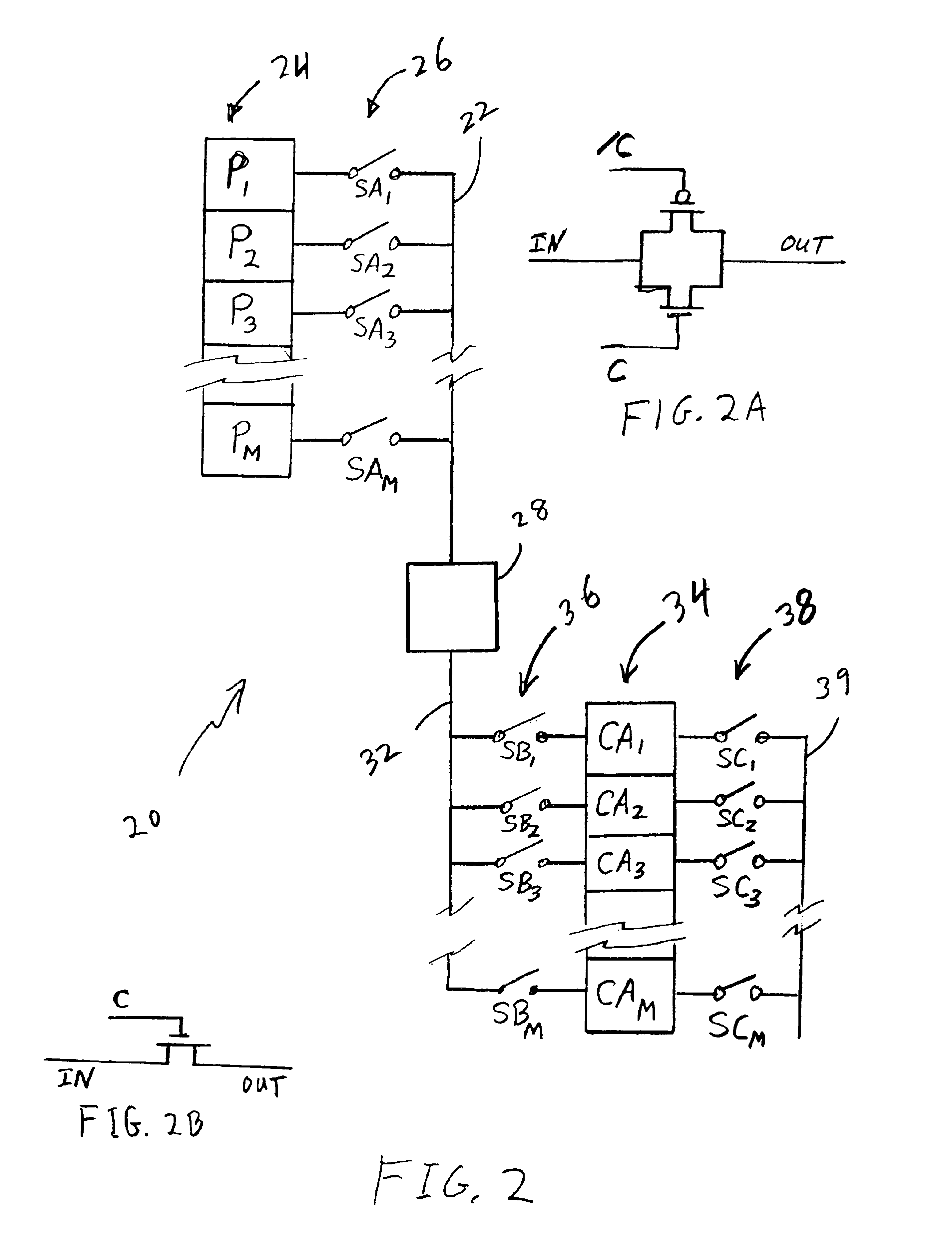CMOS TDI image sensor
a technology of image sensor and time delay, applied in the field of time delay and integration image sensor, can solve the problems of inability to achieve charge transfer in the same way, small and inability to achieve the maximum integration time available for each pixel
- Summary
- Abstract
- Description
- Claims
- Application Information
AI Technical Summary
Problems solved by technology
Method used
Image
Examples
Embodiment Construction
[0019]There are compelling reasons for implementing image sensors with CMOS processes including process accessibility, cost, advanced design rules, and the ability to add circuit functionality that cannot at present be implemented with CMOS processes (digital signal processing, memory, etc.). For example, in instances where a designer of an image sensor does not have an “in house” foundry to fabricate the sensor in wafer form, it becomes necessary to for the designer to contract with a foundry to provide fabrication services. When doing so, the designer usually selects processes and design rules that are supported by a preselected foundry on existing production lines in order to minimize costs. Since CCD processes usually require multiple poly-crystalline silicon conductor layers and CMOS processes require only one such conductor layer, the designer will have greater flexibility using a CMOS process and design rules. The present invention is a way to use a CMOS process and still be ...
PUM
 Login to View More
Login to View More Abstract
Description
Claims
Application Information
 Login to View More
Login to View More - R&D
- Intellectual Property
- Life Sciences
- Materials
- Tech Scout
- Unparalleled Data Quality
- Higher Quality Content
- 60% Fewer Hallucinations
Browse by: Latest US Patents, China's latest patents, Technical Efficacy Thesaurus, Application Domain, Technology Topic, Popular Technical Reports.
© 2025 PatSnap. All rights reserved.Legal|Privacy policy|Modern Slavery Act Transparency Statement|Sitemap|About US| Contact US: help@patsnap.com



